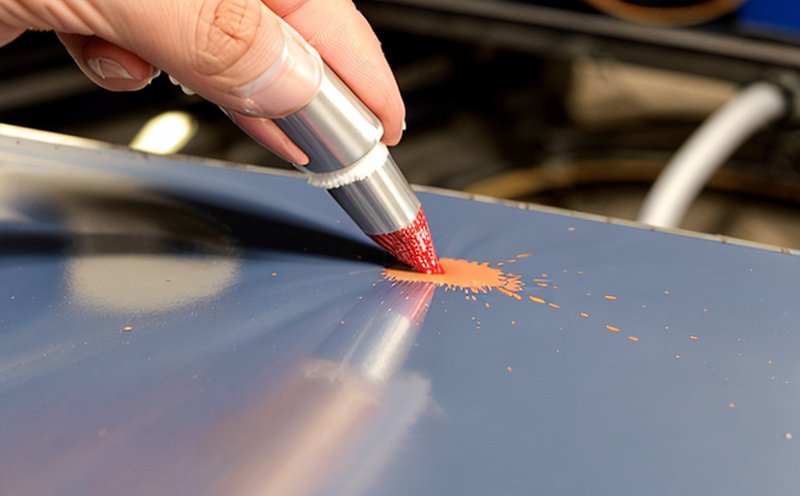UNE EN 12721 Resistance of Laminates to Wet Heat Testing
The UNE EN 12721 standard provides a method for determining the resistance of laminates to wet heat. This test is critical in ensuring that materials used in furniture and other sectors meet durability requirements under environmental conditions that might be encountered during use.
Laminates are composite materials made up of layers bonded together by adhesives. These laminates can include wood, paper, resin, and other substrates. The resistance to wet heat is an important characteristic because it affects the long-term performance of furniture in humid environments. Factors such as temperature, humidity, and material composition play a crucial role in determining how well a laminate will withstand these conditions.
The test involves subjecting samples of the laminate to specified levels of temperature and relative humidity for a set period. After this exposure, the integrity and appearance of the sample are assessed visually. The standard specifies detailed procedures including specimen preparation, environmental chamber conditions, duration of testing, and evaluation criteria.
Understanding the resistance to wet heat is essential for ensuring product quality and compliance with regulations across various sectors. Furniture manufacturers need to ensure that their products meet these standards to maintain consumer trust and satisfaction. Compliance with such tests can also help in obtaining certifications which are crucial for market access.
The test results provide critical data on how the laminate will perform under real-world conditions, helping designers and engineers make informed decisions about material selection. This information is valuable not only for furniture but also for other sectors where laminates are used extensively.
| Parameter | Description |
|---|---|
| Temperature Range | 40°C to 85°C |
| Relative Humidity | 93% ± 2% |
| Duration of Exposure | 7 days |
| Type of Specimen | Laminate samples cut to standard dimensions |
| Evaluation Criteria | Visual assessment of appearance and integrity |
The test is conducted in controlled environmental chambers that can simulate a wide range of conditions. The specimens are exposed for the specified duration, after which they undergo a visual inspection to evaluate any changes in appearance or structural integrity.
Understanding and meeting these standards helps ensure product quality and compliance with international regulations. It also aids in maintaining consumer trust and satisfaction by ensuring that products perform reliably under various environmental conditions.
Eurolab Advantages
- State-of-the-art facilities: Equipped with the latest technology to provide accurate and reliable testing results.
- Experienced professionals: Our team comprises highly qualified scientists and engineers who have extensive experience in furniture testing.
- Dedicated to quality: We adhere strictly to international standards, ensuring consistent and high-quality test results.
- Rapid turnaround time: We understand the importance of timely delivery and strive to provide quick feedback on your tests.
At Eurolab, we pride ourselves on providing comprehensive testing services that meet all your needs. Our commitment to excellence ensures that you receive accurate results and reliable insights into the performance characteristics of your materials under various conditions.
Customer Impact and Satisfaction
- Better Product Quality: Compliance with UNE EN 12721 ensures that products are durable and can withstand environmental stresses, leading to higher quality end products.
- Enhanced Reputation: Meeting these standards can enhance the reputation of your brand in the market, attracting more customers and building trust.
Our services help you ensure that your furniture laminates meet strict international standards. By adhering to UNE EN 12721, we contribute to enhancing product quality and reliability, which is crucial for maintaining a positive reputation in the industry.
We also provide detailed reports that offer comprehensive insights into the performance of your materials under various conditions. These reports are invaluable tools for R&D teams and quality managers, helping them make informed decisions about material selection and design improvements.
Use Cases and Application Examples
- Furniture Manufacturing: Ensuring that laminate components used in furniture can withstand humid environments without compromising on appearance or structural integrity.
- Interior Design: Selecting appropriate materials for interior designs that are expected to be exposed to varying environmental conditions.
The UNE EN 12721 standard is widely applicable across the furniture sector. It ensures that products meet durability and performance requirements under wet heat conditions, which is essential for long-term product reliability.
| Use Case | Description |
|---|---|
| Furniture Manufacturing | Testing laminate components to ensure they can withstand humid environments without compromising on appearance or structural integrity. |
| Interior Design | Selecting appropriate materials for interior designs that are expected to be exposed to varying environmental conditions. |
| Outdoor Furniture | Evaluating the performance of outdoor furniture components under prolonged exposure to wet heat and other environmental factors. |
| Residential & Commercial Projects | Assessing the suitability of materials for residential and commercial projects that require durability in humid environments. |
| Contract Furniture | Evaluating contract furniture components to ensure they meet strict performance standards under wet heat conditions. |
The UNE EN 12721 standard is crucial for ensuring that the materials used in your products can withstand environmental stresses, leading to higher quality and more reliable end products. By adhering to this standard, you demonstrate a commitment to product quality and durability, which can enhance customer satisfaction.





